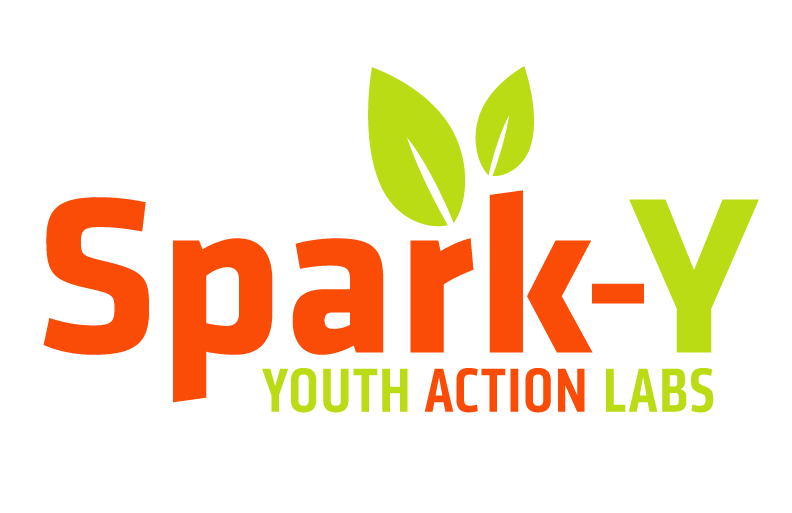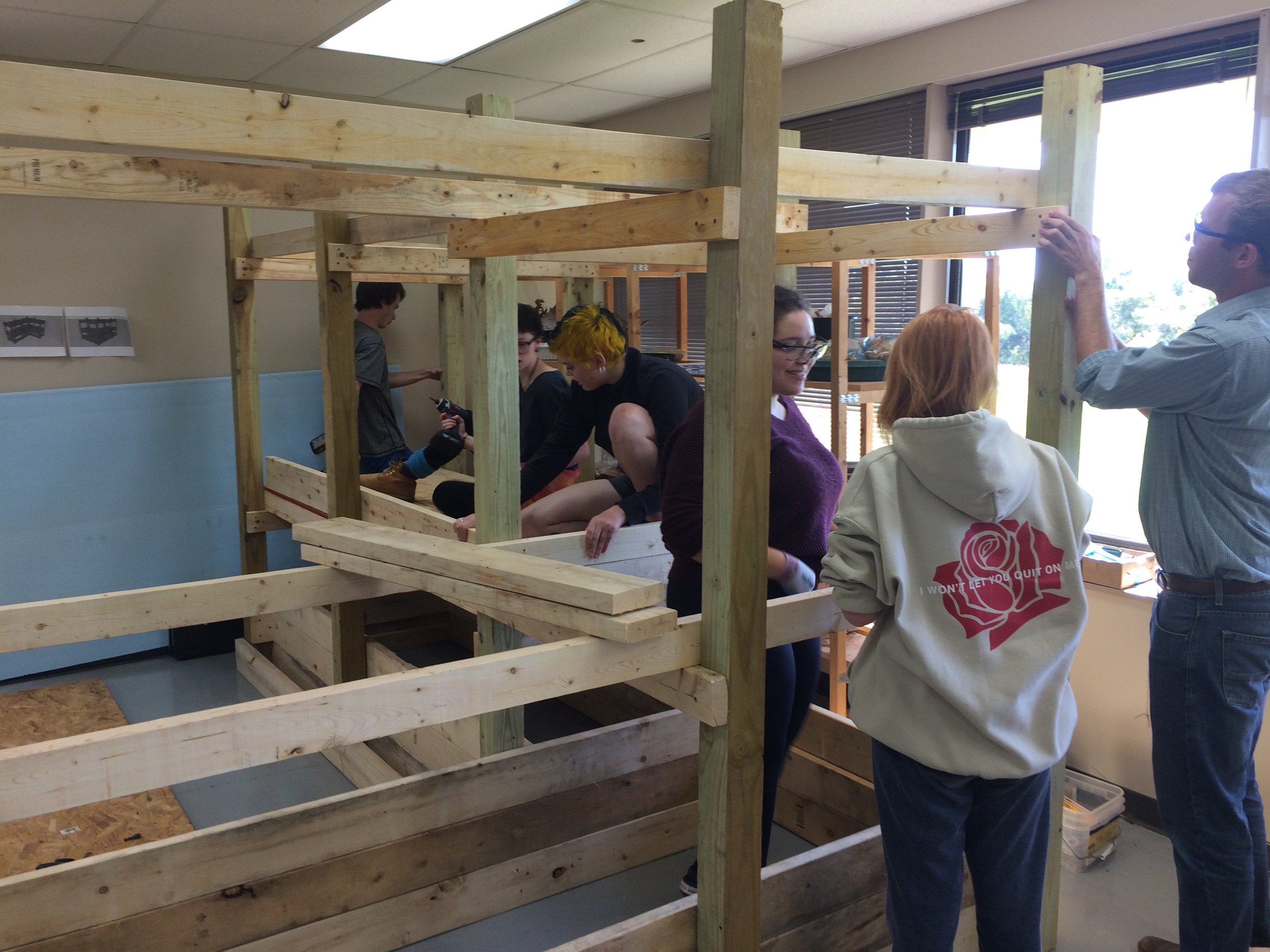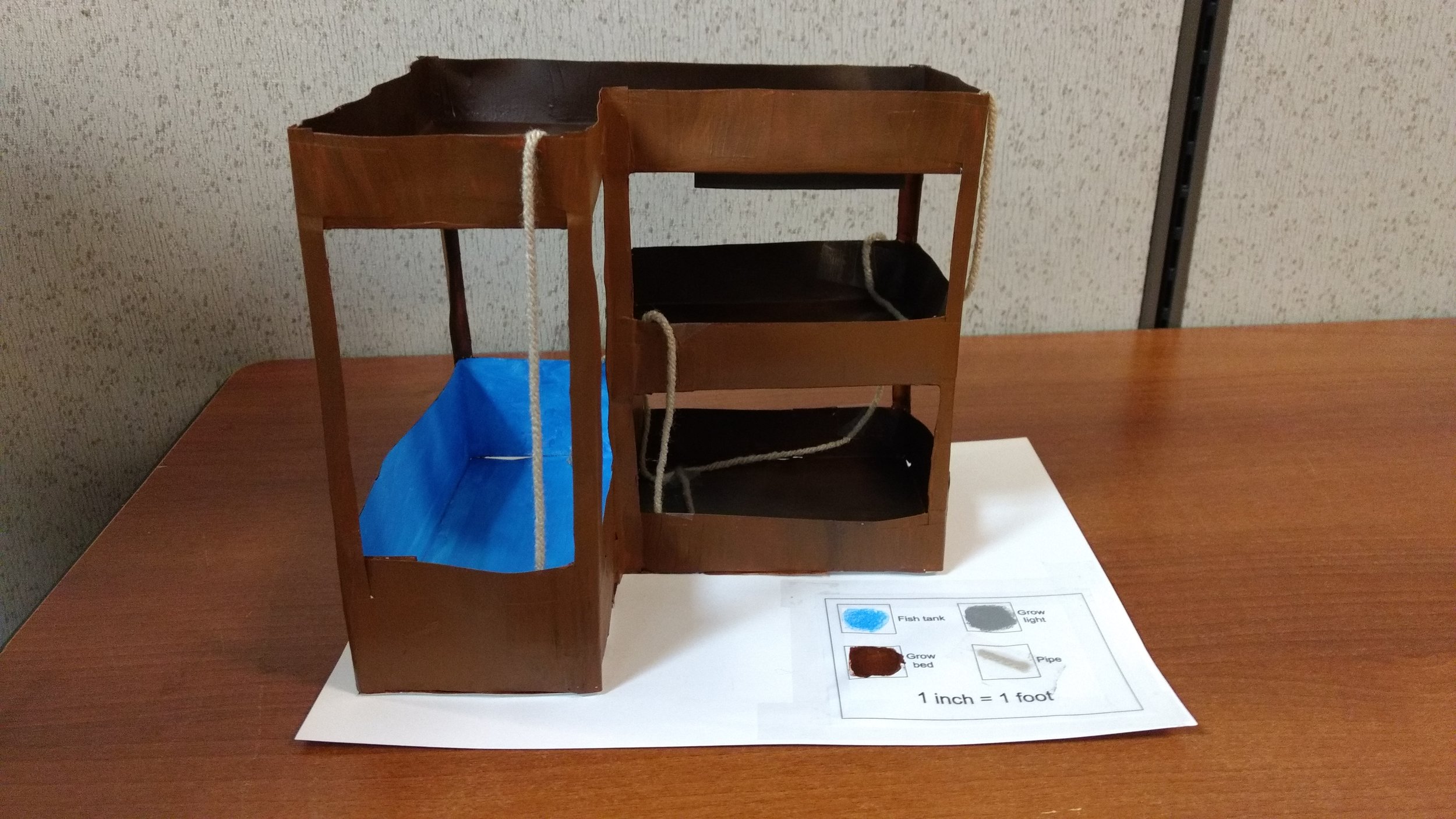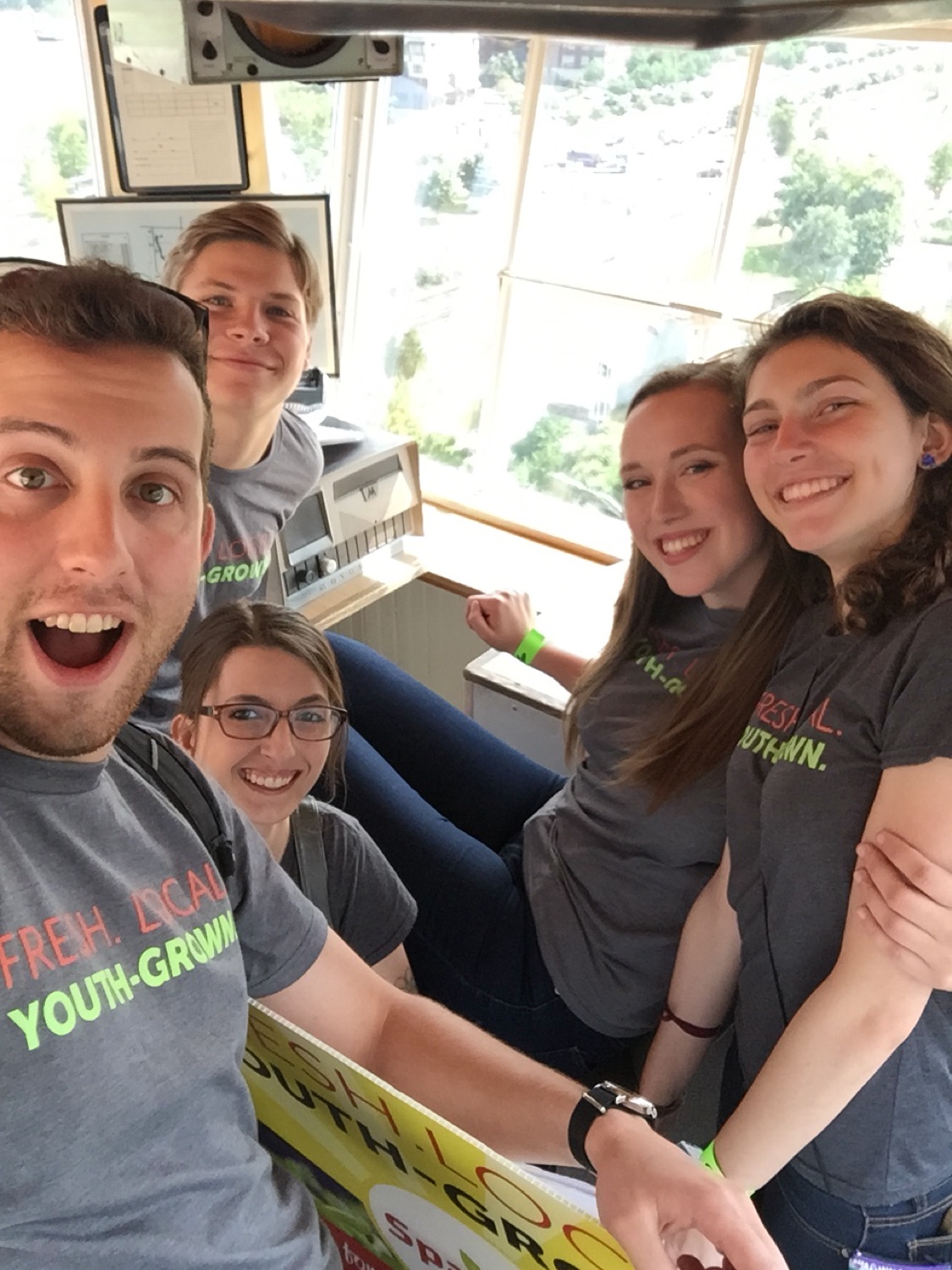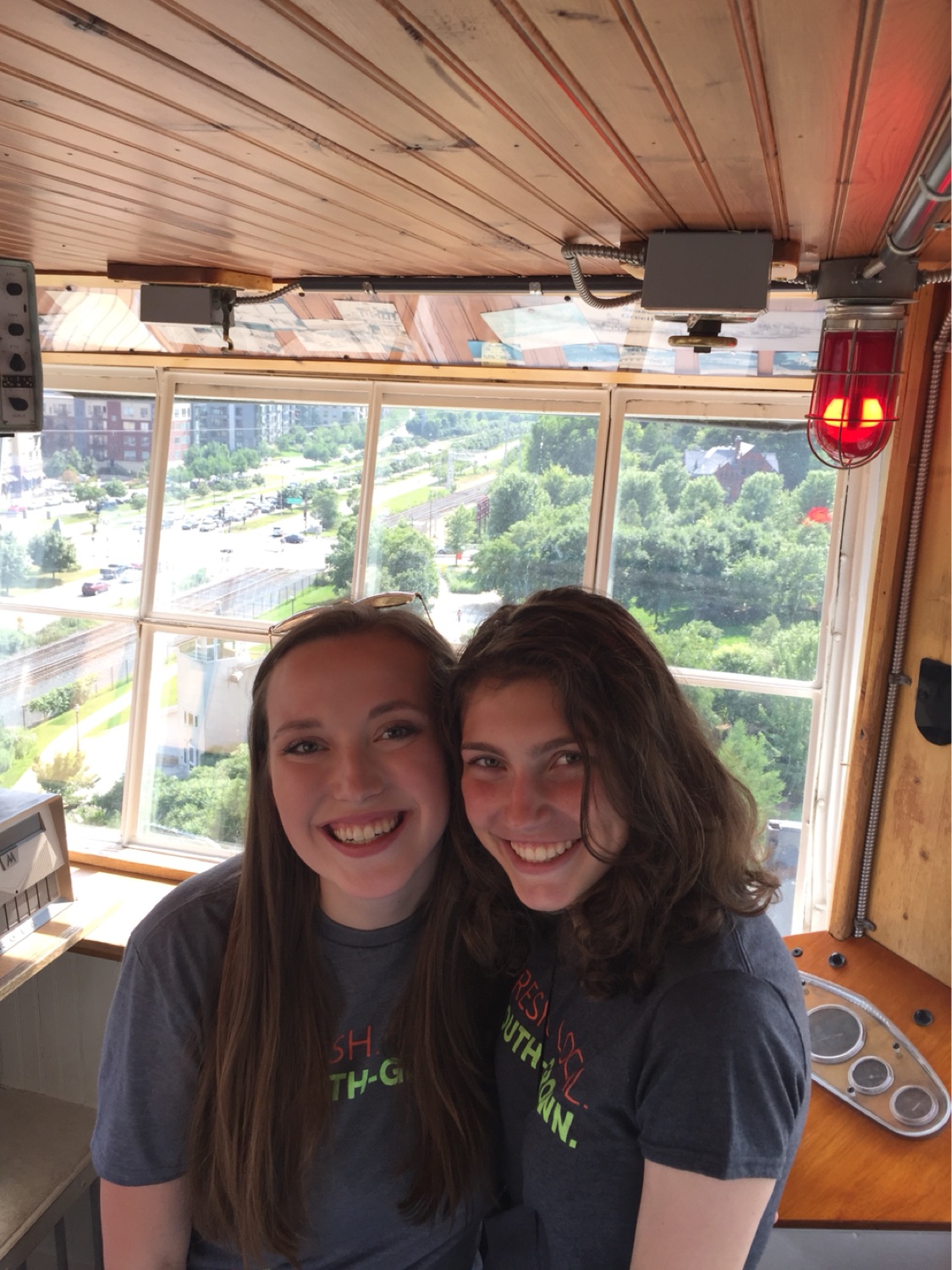Background: Integrated Arts Academy (IAA) is a Spark-Y school partner with an apprenticeship / school program hybrid. Students in the program spend half time at Spark-Y at our commercial-scale aquaponics system, learning to care system health, and the other half of their time learning STEM-based curriculum with a focus in sustainability. As a part of their education in sustainability, students submitted their own aquaponics system designs and chose one to build on-site at school. Having completed their apprenticeship at Spark-Y, students are now equipped to care for their own aquaponics system, with continued learning in their own classroom.
IAA
Youth-designed model and student-built aquaponics frame behind it.
Systems Engineer, Andrew Rescorla, shares his
experience of build day at Integrated Arts Academy (IAA).
Early on, a few students milled around while Wolid and I cut 2x4's with the chop saw. The teacher had announced that the students didn't have to help with the build, but they could if they wanted. None of the students seemed too eager- they had the too-cool-for-school vibe going.
One student, Sean, stopped to watch us. I asked if he wanted to help and he said he would, though he wasn't so sure about making a cut with the chop saw.
"Nah, I'll let you all do that."
He hadn't spent much time around power tools.
After watching a couple of cuts, he gave it a try himself and seemed surprised with how easy it was. After a few minutes, Sean and another student wandered over to Sam, our Operations Director. The three of them began laying out posts and assembling the wood framing.
When I joined them later, Sean was zipping in screws with an impact driver. 1, 2, 3. 1, 2, 3. He was doing a great job. There was also a newfound confidence, evident as he shared his opinions on wood screws vs. hex bolts and tested the strength of his joints by applying pressure to the cross beams.
Before he left for the afternoon, he stood back, admired what he'd built, and nodded. (I know this sounds corny but it really happened).
At Spark-Y we talk about empowering students to change the world - to create, invent, design, and build sustainable solutions to enormous global problems. But along the way are smaller moments of empowerment - when a student learns that they are capable of building something.
This was a small but cool moment for me to see in my first experience with a student build day. As I had imagined, many of the students were not that interested. But a few were. And those that engaged, they took ownership of the small tasks that were given to them. They learned how to use new tools, and they saw an aquaponics system take shape from a bunch of boards on the floor.
